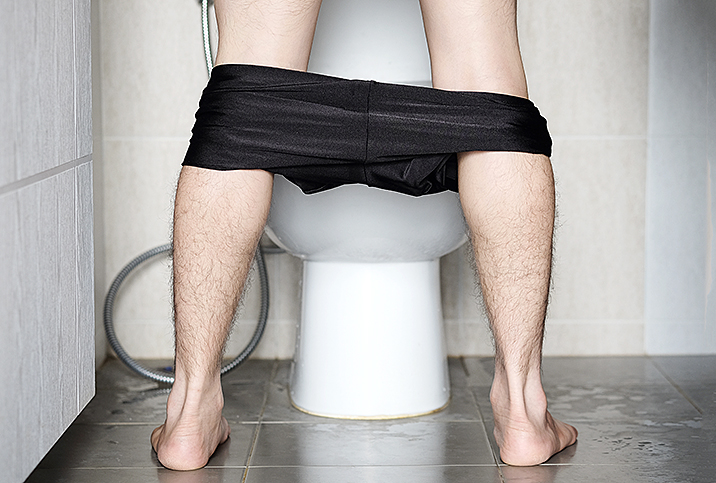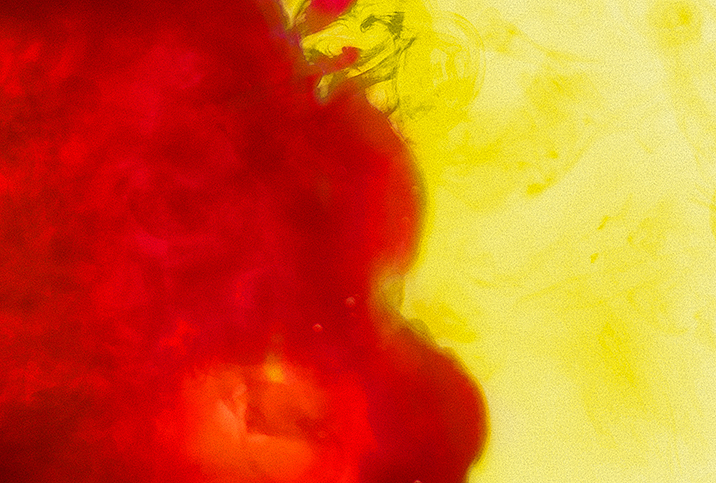It Burns When I Pee—Here's What It Could Be

The seismic shift of the COVID-19 pandemic served to drag some of us into the future against our will. Remember how your Boomer bosses tried to look cool mastering Zoom or their innate confusion at grasping the radical concept of working from home? Ah, good times.
However, COVID-19 also brought back nostalgic hits from yesteryear—think homemade haircuts and home cooking. But it's doubtful anyone foresaw another blast from the past getting a return to the spotlight: syphilis.
As we get reacquainted with venturing out into the unfamiliar sunlight—and exercise our yearning for human contact post-lockdown—now might be a good time to discuss syphilis and other reasons you might have a burning sensation down under when you pee.
An unwelcome return
Melbourne, Australia, is the latest locale fighting a syphilis outbreak, with almost 2,000 cases recorded in the state of Victoria in 2020 and 2021 combined.
Another syphilis hotspot a little closer to home for Americans is the great state of Oklahoma, with some counties seeing a 900 percent increase as of late 2020. More recently, Humboldt County in Northern California saw an increase of 450 percent for women with syphilis. Overall, California had an increase of 900 percent in diagnosed cases of syphilis.
Hopefully, your painful pee is not a result of syphilis, but it could be one of its more familiar friends.
STDs
Painful urination, frequently accompanied by discharge, is a common symptom of numerous sexually transmitted diseases (STDs), such as syphilis, chlamydia, gonorrhea, trichomoniasis and more.
None of these STDs can be cured without prescription antibiotics. So if you experience a burning sensation when you urinate for more than a day or two, get tested.
Not only that, but if you even suspect that a momentary poor decision may have put you in contact with someone who has an STD, you should get tested ASAP.
"People can have an STI (sexually transmitted infection) and not have any symptoms from it," said Petar Bajic, M.D., a urologist whose practice is affiliated with the Cleveland Clinic. "Or have symptoms that they don't notice. The only symptom might be a little bit of discharge from the penis."
UTIs
Urinary tract infections (UTIs) are bacterial infections of the urethra, bladder, ureters (the tubes that carry urine from the kidneys to the bladder) and/or the kidneys. These types of infections are more frequent for women due to their shorter urethra. However, men are also susceptible to these infections—especially older men who are starting to experience prostate issues.
"When [UTIs] do occur in men, it is often in men with urinary obstruction from an enlarged prostate (also known as benign prostatic hyperplasia, or BPH) or urethral stricture," said David Barham, M.D., a fellow in reconstructive urology at the University of California at Irvine. "This results in UTIs because the men do not empty their bladder completely, so you get static urine in the bladder, which allows bacteria to replicate and cause an infection."
UTIs are easily treatable with antibiotics, making them another candidate for a quick visit to the doctor. Barham recommends staying well-hydrated as a prevention aid since it helps to flush out the bladder more frequently.
Prostate infections
Prostatitis is an inflammation of the prostate gland, often (but not always) caused by a bacterial infection. Since the prostate and the bladder are snuggled right up against each other, and because the prostate surrounds the base of the urethra, it's no surprise an infection of one could affect the other.
In addition to painful urination, other possible symptoms of a prostate infection include fever, lower-back pain and pain in the pelvis. Treatments vary depending on the nature of each specific condition, so see your doctor right away if you experience anything from this constellation of symptoms. It may indicate a more serious condition.
Kidney stones
These nasty little rocks develop in the kidneys of 11 percent of men and 6 percent of women due to high concentrations of calcium, uric acid and/or oxalate that coalesce to form crystals. They can pass painlessly in a form as tiny as a grain of sand or can grow into jagged little vicious shards and cause excruciating pain as they make their way to and through the natural outlet for urine.
Say it with me, fellas: Ooouuuch! But don't hate the kidney stone player; hate the game they play with your insides.
"The presence of kidney stones alone does not cause pain," Barham said. "The pain occurs when they cause obstruction of the urinary tract. This typically occurs as the stone starts to 'pass.'"
Depending on the size of a kidney stone, a doctor or your urologist might recommend a procedure called lithotripsy, which uses shock waves to break up the stones into smaller pieces. If the stone remains for too long, it can accumulate more material and become dangerous.
"Kidney stones can cause a variety of problems," Barham said. "The most life-threatening complication is when a kidney stone causes obstruction at the same time as there is a UTI. This creates a backup of infected urine that cannot drain, and this can lead to a serious kidney infection or bloodstream infection (sepsis)."
Infections like this usually require prompt intervention or you run the risk of permanent kidney damage. Draining the kidney via a urethral stent is one possibility. Another is a nephrostomy tube, a catheter inserted directly into your kidney.
It's best to avoid all of this by drinking plenty of water, eating healthy, watching your weight, being careful with your sodium intake and limiting animal protein in your diet.
Your first priority
A burning sensation while you pee is never a welcome development. Luckily, most of the issues that can cause it are easily treatable.
Your main takeaway should be to get a quick diagnosis and professional treatment when it hurts to pee. There's a doctor awaiting your visit right now if you're experiencing any of these symptoms.


















